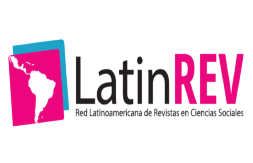Pachylis nervosus Dallas, 1852 and Pachylis pharaonis (Herbst, 1784) (Hemiptera: Coreidae) associated with Pithecellobium dulce (Roxb.) Benth. (Fabales: Fabaceae) in Arraiján, Panamá Oeste, Panama.
DOI:
https://doi.org/10.32911/as.2023.v16.n1.1008Keywords:
Associated vegetation, Bug, Legume, ornamental plants, Panamá OesteAbstract
The aim of the study was to identify the bug species associated with Pithecellobium dulce (Fabales: Fabaceae) in Arraiján, Panamá Oeste, Panama; describing the different development stages of the insect. Periodic observations were made (December 2022 – April 2023), reviewing ornamental plants, surrounding vegetation and photographic records. Bug specimens were collected for identification in the laboratory, consulting specialized literature. According to the results, two species were identified: Pachylis nervosus Dallas, 1852 and Pachylis pharaonis (Herbst, 1784) (Hemiptera: Coreidae), the first is present from Mexico to Colombia and Ecuador; the second is found in Costa Rica, Panama and several South American countries. Pachylis eggs are black and oval, with a flattened operculum and laid in groups of up to 80 eggs; the first instar nymphs have a black head, antennae, thorax and legs, with a reddish abdomen; the nymphs of more advanced stages have black, reddish, yellow and blue pigmentation, similar to that observed in other Coreidae; teneral individuals are ocher in color. The differentiation between species was achieved with adults, only. The insects were also observed on other ornamental species. In conclusion, P. nervosus and P. pharaonis are the bug species associated with P. dulce in Arraiján, Panama.
Downloads
References
Boscardin, J.; Costa, E.; Pedron, L.; Machado, D. y Da Silva, J. (2016). Primer registro de chinches (Hemiptera: Coreidae y Pentatomidae) atacando frutos de nogal pecanero en Brasil. Revista Colombiana de Entomología, 42(1), 12-15. http://www.scielo.org.co/pdf/rcen/v42n1/v42n1a03.pdf
Brailovsky, H. y Guerrero, I. (2014). Revisión del género Pachylis con descripción de dos especies nuevas, sinonimias y datos de distribución (Hemiptera: Heteroptera: Coreidae: Nematopodini). Revista Mexicana de Biodiversidad, (85), 363-382. https://doi.org/10.7550/rmb.41466
Cazorla, D. (2020). Acerca de la importancia médica de los insectos heterópteros (Hemiptera-Heteroptera). Saber, (32), 192-199. https://www.researchgate.net/publication/351590949_ACERCA_DE_LA_IMPORTANCIA_MEDIA_DE_LOS_INSECTOS_HETEROPTEROS_HEMIPTERA-HETEROPTERA_ABOUT_THE_MEDICAL_IMPORTANCE_OF_HETEROPTERAN_INSECTS_HEMIPTERA-HETEROPTERA
Collantes, R. y González-Ochoa, F. (2021). Artrópodos benéficos asociados al agroecosistema cocotero (Cocos nucifera L.) en Costa Abajo, Colón. Ciencia Agropecuaria, (32), 1-11. http://www.revistacienciaagropecuaria.ac.pa/index.php/ciencia-agropecuaria/article/view/416
Collantes, R.; Jerkovic, M. y Beyer A. (2021). Insectos y arañas asociados a plantas ornamentales en David, Chiriquí, Panamá. Aporte Santiaguino, 14(1), 9-20. http://dx.doi.org/10.32911/as.2021.v14.n1.703
Collantes, R.; Santos, A.; Pittí, J.; Atencio, R. y Jerkovic, M. (2023). Vegetación asociada al género Zelus Fabricius, 1803 (Hemiptera: Reduviidae) en Cerro Punta, Chiriquí, Panamá. Ciencia Agropecuaria, (36), 24-36. http://www.revistacienciaagropecuaria.ac.pa/index.php/ciencia-agropecuaria/article/view/603
Collantes-González, R.; Ríos-Moreno, A.; Espinosa-Rivas, A. y Santos-Murgas, A. (2023). Nuevo reporte de Sphictyrtus intermedius Stal (Hemiptera: Coreidae) en Boquete, Chiriquí, Panamá. Revista Investigación Agraria, 5(1), 7-12. http://dx.doi.org/10.47840/ReInA.5.1.1820
Dellapé, P.; Melo, M.; Dellapé, G. y Olivera, L. (2023). Pachylis argentinus Berg, 1879. Pentatomorpha(Hemiptera: Heteroptera) especies de Argentina y Uruguay. https://biodar.unlp.edu.ar/pentatomomorpha/
Goula, M. y Mata, L. (2015). Clase Insecta: Orden Hemiptera: Suborden Heteroptera. Revista IDE@ - SEA, (53), 1–30. http://sea-entomologia.org/IDE@/revista_53.pdf
Hanson, P. (Ed.). (2014). Insectos y arañas. En Wheelwright, N. T. y Nadkarni, N. M. (Eds.), Monteverde: ecología y conservación de un bosque nuboso tropical (2014), Capítulo 4 (pp. 139-220). Bowdoin's Scholars' Bookshelf. Book 3. http://digitalcommons.bowdoin.edu/scholars-bookshelf/3/
Henry, T. (2009). Biodiversity of Heteroptera. En Foottit, R. y Adler, P. (Eds.), Insect Biodiversity:Science and Society, Chapter 10 (pp. 223-263). Blackwell Publishing Ltd. ISBN: 978-1-405-15142-9, UK. https://doi.org/10.1002/9781444308211.ch10
Hernández, R.; López, V.; Guillén, D.; Alia, I.; Juárez, P. y Hernández, R. (2021). Primer registro de especies invasoras de chinches (Heteroptera: Coreidae) sobre naranja (Citrus sinensis (L.) Osbeck) en Mazatepec, Morelos, México. Manglar, 18(1), 89-94. http://dx.doi.org/10.17268/manglar.2021.012
Pérez, Y. (2023). Plantar árboles en las ciudades, clave para reducir el impacto de las olas de calor. La Estrella de Panamá. https://www.laestrella.com.pa/cafe-estrella/planeta/230213/plantar-arboles-ciudades-clave-reducir
Rodríguez-Hernández, B.; Osorio-Burgos, O.; Moreno-Serrano, D. y Barba-Alvarado, A. (2022). Presencia de Orius insidiosus Say (Heteroptera: Anthocoridae) en la región de Azuero, Panamá. Revista Investigaciones Agropecuarias, 4(2), 8-20. https://revistas.up.ac.pa/index.php/investigaciones_agropecuarias/article/view/2923
Sánchez, J. (2016). Pithecellobium dulce (Roxb.) Benth. Árboles ornamentales, ES. https://www.arbolesornamentales.es/Pithecellobium%20dulce.pdf
SECF (Sociedad Española de Ciencias Forestales). (2023). Diccionario Forestal. http://secforestales.org/diccionario_forestal_secf/h?title=&page=22#:~:text=Organismo%2C%20vegetal%20o%20animal%2C%20susceptible,Sin.%3A%20hu%C3%A9sped%20potencial.
STRI (Smithsonian Tropical Research Institute). (2023). Pachylis. Panama Biota. https://panamabiota.org/stri/taxa/index.php?taxon=Pachylis&formsubmit=Search+Terms
Published
How to Cite
Issue
Section
License
Copyright (c) 2023 Ruben Darío Collantes, Alonso Santos-Murgas

This work is licensed under a Creative Commons Attribution 4.0 International License.




















